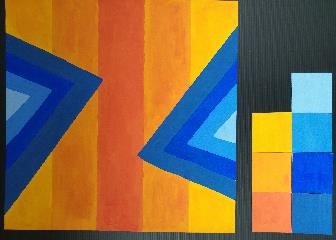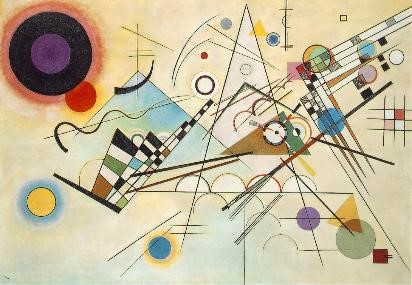Reliving Imaginations in a Highly Tangible World
By Andreas J. Pratama
The world we live in today requires minimal imaginations, we are grounded in tangible realities and quick facts. Yet the majority of basic things that drive us for nearly everything to become reality is imagination. The reason many people buy cars are the abstract sense of satisfaction in “feels”. The car itself is visually and tangibly real but it is the sense of joy that the satisfaction brings; the feel of its shock dampener, the colors, the shape, all of which contributes to abstract pleasures residing only in the mental realm. Reality never cares what the shape of the car is as long as it is functional and un-obstructive to the surroundings.
Out of a very relaxed afternoon conversation with a fellow lecturer from different department sparked me to realize how much our side of imaginative mind has died out – myself included. Out of a very simple question upon gazing on an abstract composition by one of the students the fellow lecturer asked “how do you enjoy this?” “what are you suppose to get out of this thing?”

I was ready to jump at the question and explain to him how to enjoy it. The composition being the one above. There was no gap between me and the composition that disallow me to instinctively emulate the feel through the limit of language. The problem being that language is so limited in illustrating feeling that they take time for it to deliver the sensation meant to be felt. To a trained mind and a synesthetic person, color may appear as sound and phantasmal taste in the tongue, shapes may appear they are ready to move in certain directions and posing threat.
In my explanation I quickly mentioned “can you feel the two protruding blue triangles about to move towards the center?”. Responded by 10 seconds pause from the interlocuter, he hummed in perplexity, followed by “oh! is that how you’re suppose to see it?”. “That’s it” I replied. The problem with the culture today is that, such playful imagination is dulled and we focus on the highly calculable and proof-able fact that imaginations become suppressed. The experiences and imagination we once had when we were children were doused in the flames of logic, however to mention that logic kills imagination is also false, for in imagination logic were also implanted to simulate gravity, power, movement, trajectory, and temperature, comfort and danger. Nearly all of which are instinct based learning earned out of logic.
The following question asked revolves around colors “what do these color mean?” and I asked back “what do you feel when you look at the entire composition?” “Can you see a particular stressing point central to the entire weight of the composition?” getting the taste of the previous imaginative simulation he replied “I can feel that the orange line in the center is darker than the rest and will therefore feel as if they are being squeezed together by the two sharp triangular teeth”. To me, this suffice the requirement to enjoy abstract composition in its most basic function. The rest appear instinctively, as long as that mind and perspective is liberated the rest will come flooding in untapped.

Wassily Kandinsky. Composition 8
Wassily Kandinsky being a synesthetic himself worked with composition the rest of his life post expressionism days. He named them as “compositions” for abstract compositions are purely energy, imagination, instinct and logic one that he called “spiritualism” (dynamic energy and not supernatural in context) in art. Reading abstract art requires logic, imagination and a mind ready to simulate temperature, movement, and pressure. Take one capability from the series out and the entire sensation is tarnished.


Comments :